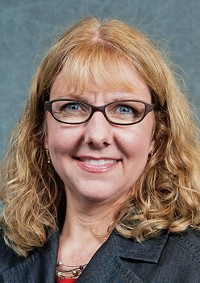Advertisement
Grab your lab coat. Let's get started
Welcome!
Welcome!
Create an account below to get 6 C&EN articles per month, receive newsletters and more - all free.
It seems this is your first time logging in online. Please enter the following information to continue.
As an ACS member you automatically get access to this site. All we need is few more details to create your reading experience.
Not you? Sign in with a different account.
Not you? Sign in with a different account.
ERROR 1
ERROR 1
ERROR 2
ERROR 2
ERROR 2
ERROR 2
ERROR 2
Password and Confirm password must match.
If you have an ACS member number, please enter it here so we can link this account to your membership. (optional)
ERROR 2
ACS values your privacy. By submitting your information, you are gaining access to C&EN and subscribing to our weekly newsletter. We use the information you provide to make your reading experience better, and we will never sell your data to third party members.
Careers
Family-Friendly Liberal Arts Colleges
April 28, 2008
| A version of this story appeared in
Volume 86, Issue 17
Although I read with excitement about the implementation of family-friendly practices to ease the tenure-track burden for female academics at large research universities, I was disappointed to see that the scientists quoted in the article perceive that they must make a choice between industry and an academia narrowly defined as a large research university (C&EN, March 3, page 55). In fact, many options exist within academia.
According to the Carnegie classification literature for colleges and universities, there are 266 primarily undergraduate institutions (PUIs) in the U.S., compared with 262 universities. In light of this information, it’s a shame more mention is not made about PUIs and liberal arts colleges in general, especially in C&EN’s Employment Outlook section.
I state from experience that the path to tenure at a liberal arts college, although challenging, is quite different from that at a large research university, and it’s an option that can provide women with a better balance between work and family. When I started teaching at Dickinson College 20 years ago, I was the first and only woman in a department with six full-time faculty members. Currently, we have five women in our now seven-person department! Although this may be a higher ratio than at most (if not all) liberal arts colleges, I am certain that women are becoming well represented at colleges across the country. It would be interesting for C&EN to compare the situation at the top 50 universities (C&EN, Dec. 24, 2007, page 44) to that at the top 50 liberal arts colleges. I would bet that women make up far more than 15% of the chemistry faculty at the latter institutions.
My question is whether this omission is a problem of reporting or just that the American Chemical Society chooses to focus more on universities than on PUIs. Ironically, also in the March 3 issue is a short article in the ACS News section that describes an ACS workshop designed to give doctoral students a better understanding of their career options after graduate school. There was no mention of liberal arts colleges at this workshop; in fact, the only academic perspective given focused on what one could expect during the first year as a university professor. Although this was an ACS-sponsored workshop and this omission is not the fault of C&EN, it does reflect a serious oversight. Perhaps other workshops involve discussions about PUIs, and if so, these should be reported in this magazine.
Finally, I am not saying that women should forget about working at large research universities as a career option—quite the contrary. It is essential that women be represented everywhere that chemistry is done. I am simply stating my observation that there seems to be a glaring omission in not discussing liberal arts colleges as another excellent career path for women scientists who hope to contribute to the world of science and at the same time have a satisfying personal life.
Cindy Samet
Carlisle, Pa.




Join the conversation
Contact the reporter
Submit a Letter to the Editor for publication
Engage with us on Twitter